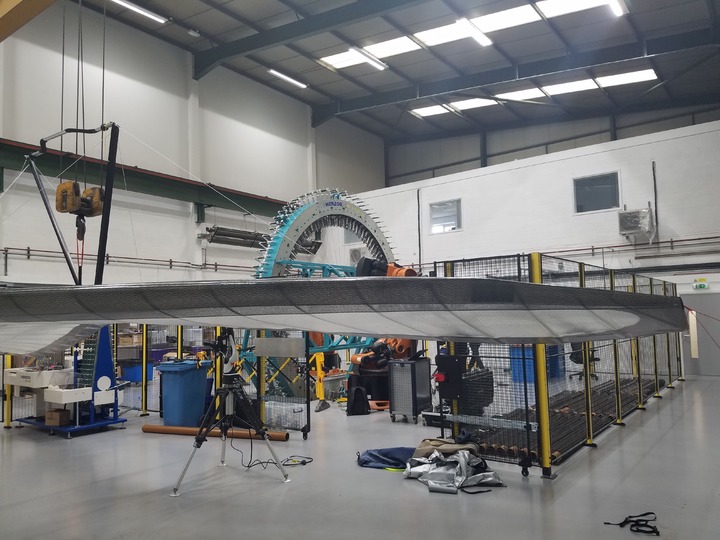AMRC helps hang glider design take ‘first step forward’ in years
23 September 2019Hang glider design could take its first significant step forward in two decades, thanks to a collaboration between the UK’s only manufacturer of the aircraft and the University of Sheffield’s Advanced Manufacturing Research Centre (AMRC).
Peak District-based Avian Hang Gliders approached the AMRC for help in developing a precise 3D model of the wing, which could be fed back into analysis to lead to a more aerodynamically optimised design.
The AMRC is part of the High Value Manufacturing Catapult (HVMC) and the project was paid for using funds from the HVMC as part of a commitment to working with small and medium-sized manufacturers.
Director at Avian Hang Gliders, Dr Tim Swait, said: “In the early 2000s hang gliders became ‘topless’; they lost the king post, the top rigging went and the stability systems were all integrated into the wing. Since then, there has been incremental developments but there has not been any real step changes.
“What we are trying to achieve at Avian is identify where we can make real significant difference in hang glider design. There are some interesting gaps that we can see and we know the efficiency of a hang glider can be quite a bit higher than it is at the moment.
“Really, having an accurate 3D representation of what the glider truly is, will be the first step to going forwards.”
A glider, supplied by Avian, was scanned in the AMRC’s Composite Centre using a Hexagon ROMER Arm and analysed using Verisurf software.
The scan was carried out with the glider hanging upside down to make the aircraft more representative of being flown. In flight, airflow over the wing creates pressure differences which produce lift, but also changes the shape of the fabric sail. This couldn’t be replicated when scanning, so AMRC engineers utilised the force of gravity to create tension in the glider which acted as an appropriate approximation.
Development Engineer at the AMRC, James Grigalis, said: “You don’t realise how much sails get put under tension. When you pull the sail tight, all the struts inside the wing bend and tension up; it is very hard to get a computer-aided design (CAD) model of that without doing something like a scan.
“We could have hung weights off the wings to create the tension, but then you’re not tensioning the sails in the right way.
“In the 3D scan, a point was taken every 3mm so a data cloud was produced that had around 5 million points. Avian was provided with the initial point cloud in a comma-separated values (CSV) file and a surface, so they could work off both.”
“What we’re really trying to do is get the shape that the glider has in the air because that is different to what it is on the ground,” said Tim. “Hang gliders are fundamentally flexible; you have flexible fabric, a sail, even the carbon fibre frame isn’t rigid over that scale. Sections can be metres long and fairly thin, so there is quite a significant curvature in everything.
“We’re also developing an analytical model of the glider. Now we have this data, we can feed the computer model with the current shape of the glider and use the model to optimise what shape it should be. Then we can reverse back from that ideal shape to what we make, to get it back to being that ideal shape when it is in the air.”
James added: “The equipment we use here is worth tens of thousands of pounds, so it just doesn’t make sense for a small business like Avian Hang Gliders to purchase it. Coming to the AMRC for this project has helped Tim make progress he might not be able to make otherwise.”
Tim continued: “Accurate measurement is crucial to further development; having a really accurate starting point of known geometry, that I can absolutely trust, is vital for what I am trying to achieve.”



